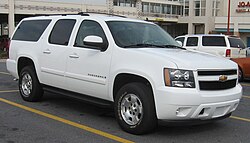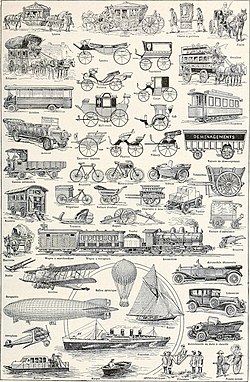
Back Individualverkehr German Transporte privado Spanish Kendaraan pribadi ID Личен превоз Macedonian Transporte individual Portuguese Transporti privat Albanian 私人交通工具 Chinese
This article needs additional citations for verification. (December 2009) |


Public transport depicted; ambulance, charabanc, horsecar, mailcoach, motorbus, rickshaw, stagecoach, steam locomotive, streetcar

Private transport (as opposed to public transport) is the personal or individual use of transportation which are not available for use by the general public, where in theory the user can decide freely on the time and route of transit ('choice rider' vs. 'captive rider'[1]), using vehicles such as: private car, company car, bicycle, dicycle, self-balancing scooter, motorcycle, scooter, aircraft, boat, snowmobile, carriage, horse, etc., or recreational equipment such as roller skates, inline skates, sailboat, sailplane, skateboard etc.
- ^ "Transportation Research Thesaurus: Captive riders". The National Academies of Sciences, Engineering, and Medicine. The National Academies of Sciences, Engineering, and Medicine. Retrieved 2019-04-02.
© MMXXIII Rich X Search. We shall prevail. All rights reserved. Rich X Search